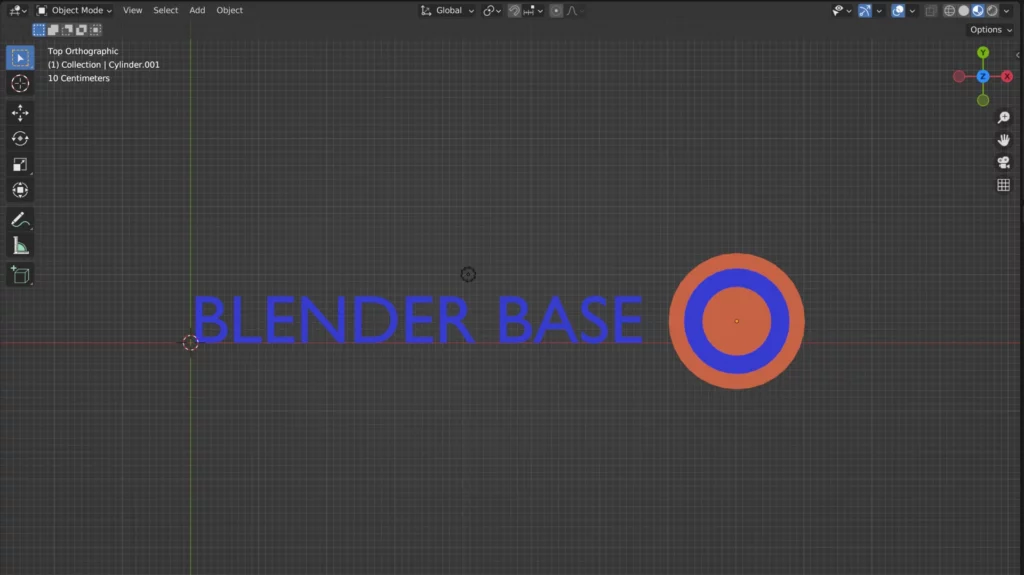Blender is a free open-source program provided by the Blender foundation. It is one of the fastest developing 3D toolkits currently available and also one of the fastest growing online communities in the technology space. But if you were to download Blender what exactly could you use it for?

Blender is primarily used as a 3d modeling suite that allows you to create 3d scenes and models for several different industries including animation and game design. Below is an extended list of what Blender could be used for….
- 3D Assets And Environments For Video Games
- 3D And 2D Animations
- Sculpting For Visualization And High Quality Renders
- Architectural Design
- Built In Video Editor
- VFX
- Motion Capture
- Logo Design
- Motion Graphics
- Realistic Scene Creation
As Blender continues to develop more use cases will become available, but even now the list of reasons why you would want to use Blender is extensive.
What Is Blender And Why Would Someone Use It?
Blender has many features and tools that make it a powerful and versatile software for 3D creation. Blender is a great tool for begins because of a variety of reasons.
For example, Blender is free and open-source, which means that anyone can download, use, share, modify, and distribute it without any restrictions or costs. The Blender Foundation is also supported by a large and active community of developers and users who contribute to its improvement and innovation.
The application is integrated into many popular workflows, which means that it offers a complete 3D pipeline within a single program. It can handle tasks like modeling, sculpting, UV mapping, texturing, shading, lighting, rigging, animation, simulation, rendering, compositing, video editing, and more.
It also has the ability to create realistic scenes, which means that it can produce high-quality 3D models and renders using its advanced features and tools. Blender has a built-in unbiased path-tracer engine called Cycles that offers stunning and realistic rendering.
Blenders Supported Data Types
It also supports various types of 3D data, such as geometry, materials, textures, animations, and more allowing you to create anything and everything.
Blender 3D is flexible and customizable as software, which means that it can adapt to different needs and preferences of users. It has a modular and user-friendly interface that can be customized and rearranged according to the user’s workflow.
The application also uses a powerful scripting language called Python that allows users to create their own tools and add-ons. Some of these are three, while others require a fee as they do not full under the same licensing as the Blender software itself.
And it is compatible with other applications thanks to its ability to import and export a variety of formats. Blender can import and export various standard and proprietary 3D file formats, such as FBX, OBJ, COLLADA, STL, SVG, PLY, and more. Blender can also be used with other software or devices, such as Unity, Unreal Engine
The Primary Use
The primary use of Blender is to create three-dimensional objects and scenes using the 3D viewport and a suite of modeling tools that allow the user to create any object and any scenario that they want to create in 3D space.
Basic objects and environments can be created using mesh objects constructed from three types of geometry. These are vertices, edges, and faces.
By manipulating the geometry we can control the form of any 3D object we create. There are different methods to creating objects in Blender and different toolsets to accommodate those methods.

For example, when creating character models of high detail the artist can use Blenders suite of sculpting tools by switching to sculpt mode.
Creating models in Blender opens the door to several industries. low poly models and environments can be created in Blender to be exported into video game engines such as Unity and Unreal Engine.
Note that all projects in Blender use the .blend file extension. While you can use this file type in unity by saving it directly to your unity asset folder, the standard method would be to export the object as an .FBX or .OBJ file when moving over to a game engine.
Most users of Blender will at first probably fall into this category and will need to learn the skills for creating objects that can be optimized and used for those game engines.
While there are many skills to develop in Blender there is often little need to learn all of them. If you are a designer for environmental assets then you probably won’t need to learn how to sculpt highly detailed characters.
Other Uses
Blender is also used for creating animations of various lengths. There is a wide array of settings for controlling how you want to render those animations such as the frame rate and file output options.
Where for video games Blender is a part of the process for creating the assets of a video game, an animator could create an animation using Blender 3D exclusively.
It is possible to create near Pixar quality using Blender though this can be dependent on the hardware to an extent as well as your own skillset.
Architecture
In addition to the above, the software can also be used for architectural visualization. You can design floor and building plans to precise measurements for home improvements or construction projects and demonstrate your designs to clients with a render of your plan.
You could even now go one step further here as Blender can be integrated into a virtual reality headset allowing clients to view your layout as if they were actually there.
Blender allows the use of addons that provide additional functionality depending on the use case as the default set of tools available may not be as intuitive or as in-depth as the user would like.

For example, the Archviz addon can be used to very quickly create wall plans using a small library of assets like walls, floors, doors, and windows to quickly build a base design for your floorplan.
This is much faster than creating, extruding, and scaling each object and then positioning each object into your scene
Note that while some add-ons are enabled by default, most are disabled to keep the interface sleek and usable.
2D Animations
Not only are you able to create fully 3D scenes for animations, but you can also create 2D animations as well. To do this Blender uses a tool known as the grease pencil. Think of it as a brush used to draw in both 2D and 3D space. The lines created by the grease pencil can be both edited and animated as required.
As with many other use cases with Blender, learning to use the grease pencil is very different from other areas of Blender like building scenes from 3D objects.
You aren’t limited to just using the grease pencil for creating 2D animations, as you can also use 3D objects and scenes, combined with a 2D view to create a 2.5D like effect for your animations.
Sculpting
The sculpting toolkit is used to add significant amounts of detail to 3D objects in far less time than what would be needed for standard modeling tools. Sculpts can be created for video game characters, although additional steps may need to be taken for a sculpted character to be usable in a game.
This process is called baking and it involves mapping the details of a high poly model onto a low poly one.
That said modern game engines are much more efficient at handling large amounts of geometry and this process is becoming less and less important.
Beyond that, sculpts can also be used for high-quality animations, as well as very high-quality renders. However, when using sculpted models in animations keep in mind that the amount of geometry in a scene strongly influences the amount of time it takes to render the scene.
With single renders, artists can add as much detail as possible through sculpting to achieve maximum levels of detail. These renders can then be sold as works of art on appropriate websites.
Logo Design
Blender is a fantastic tool for creating logos, either in two dimensions with the grease pencil or 3D logos in the standard viewport.
They’re also basic text tools that allow to create 2D and 3D text. This allows you the freedom of not only creating traditional static logos but also animated intros for YouTube and course videos. More and more YouTubers are now beginning to turn to Blender to create their own unique intro videos.

Many freelancers and independent artists will often offer their services to companies to design their logos, which often leads to heavy competition in this field. The advantage of using Blender is that not only can you create a traditional 2D version of a logo but you can create 3D animations for it as well.
Video Editing
If there is a single word that you could use to describe Blender 3D, that word would be versatile. Not only does Blender allow you to create animations, but you can also make edits to those animations with the built in video sequence editor.
In fact, the video that you want to edit does not even need to be a rendered animation, but any standard video format like an mp4 can be added and edited. Now Blender will not compare to a more established video editing software like Davinci Resolve, but it still has all the basic tools needed to get the job done.
As you can see there are many reasons as to why you would choose to use Blender. It’s a jack of all trades software that gets better and more versatile as time goes on.
Here Are Some Other Articles We Think you May Be Interested In
Thanks for checking out our article, we have compiled a list of topics we think you might be interested in, take a look
- Is Blender Hard To Learn For Beginners?
- How Long Does It Take To Learn Blender?
- How To Download The Latest Version Of Blender?
- Will Blender Get Me A Job In The Industry?
- How Than I Sell 3D Models That Are Made In Blender?
-
Auto-Rig Pro: Quick Rigging in Blender
Streamlining rigging processes with Auto-Rig Pro in Blender.
-
DecalMachine: Detailing in Blender
Adding intricate details effortlessly with DecalMachine in Blender.
-
MeshMachine: Blender Modelling Enhancer
Enhancing Blender modeling with MeshMachine’s advanced tools.
-
BoxCutter Add-On: Blender Cutting Guide
Utilizing BoxCutter for precise and efficient cutting in Blender.
-
HardOps: Blender Hard Surface Mastery
Mastering HardOps for unparalleled hard surface modeling in Blender.
BEGIN LEARNING AND DEVELOPING WITH OUR BLENDER VIDEO SCHOOL!!
Check out our course library if you are looking for a systematic and effective way to improve your skills as a 3D artist. Click Here To Learn Blender The Right Way!


Comments are closed.